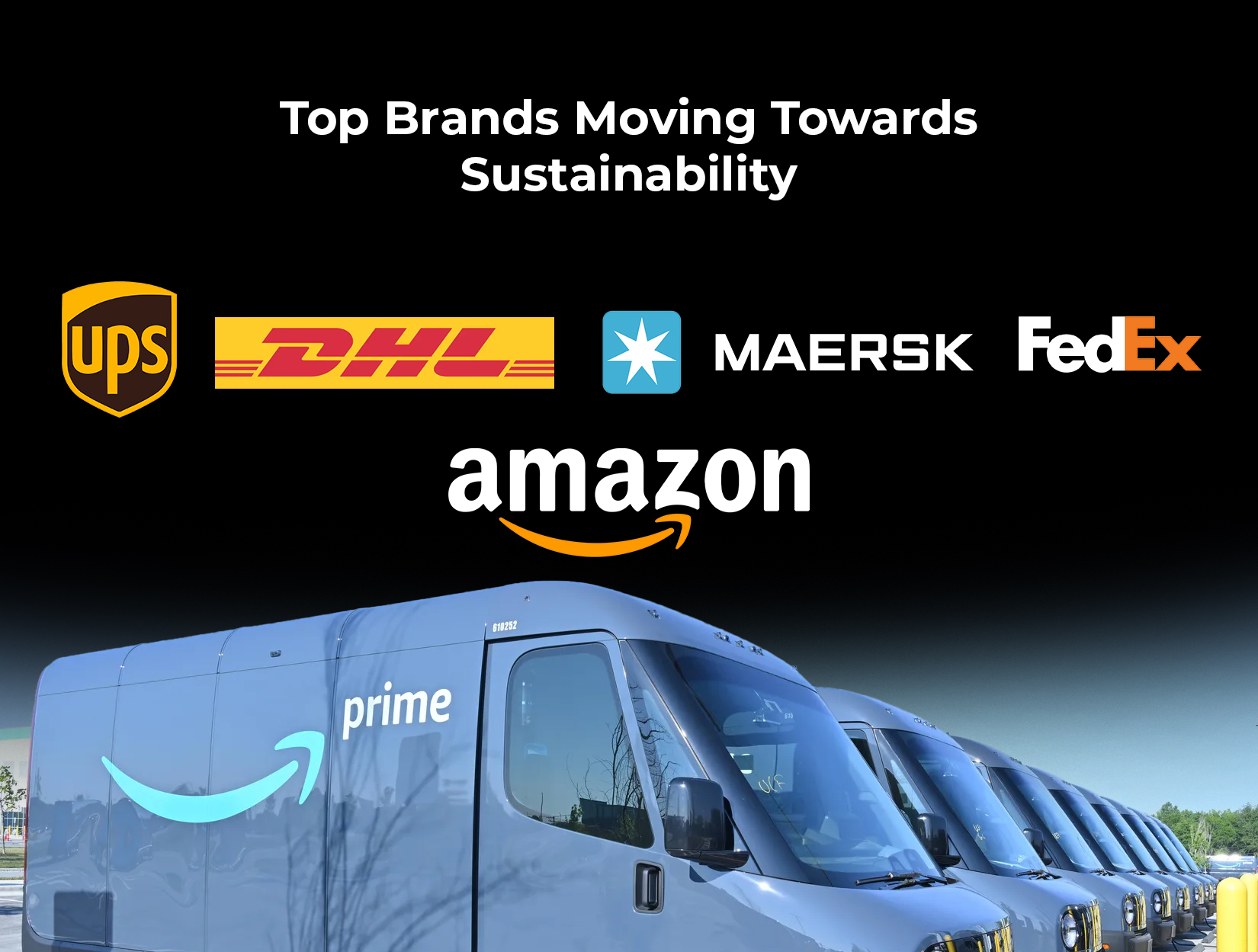
Green Fleet: How does an LMS help Prioritize Focus on Sustainability and Business Growth?
Amidst the rapid flow of modern commerce, where deliveries make customers happy and journeys shape our future, there’s a growing need for sustainability. Imagine a fleet of vehicles, each one essential for getting goods from A to B in the city. But amid all this hustle and bustle, there’s a quiet voice nudging us to be greener. Welcome to the world of Green Fleet management, where we balance logistics with a conscience, aiming for sustainability while we grow. And in this quest, we have a trusty ally: Logistics Management Software (LMS). A tool that helps us optimize routes, minimize fuel consumption, and reduce emissions, all while ensuring our fleets run smoothly.
Don’t Miss: Focus On Sustainable Logistics Management Solutions
Once upon a time, in a bustling city, there was a fleet of delivery vehicles, each with a mission to fulfill. But amidst the hustle and bustle, there was a whisper in the air – the call for sustainability. And this is where our story begins.
What is Green Fleet?
In the heart of every bustling business lies a fleet of vehicles, the heartbeat of operations. But a Green Fleet? Ah, that’s a different beast altogether. It’s not just about getting from point A to point B; it’s about doing so in the most eco-friendly way possible. It’s about minimizing carbon footprints, reducing emissions, and paving the way for a greener tomorrow.
Also Read: How To Move Towards Sustainability With Precise Logistics Route Planning And Optimization?
How does Green Fleet Work?
Picture this: a fleet of vehicles, each equipped with the latest technology to optimize routes, minimize fuel consumption and reduce emissions. It’s like a well-choreographed dance, with every move carefully planned to leave the lightest environmental footprint possible. From electric vehicles to hybrid models, every choice is a step towards a more sustainable future.
Why is Green Fleet Management Crucial Today?
In a world where climate change looms large and environmental consciousness is on the rise, a green fleet has become more crucial than ever. It’s not just about meeting regulations or ticking boxes on a checklist – it’s about taking responsibility for the impact we have on our planet. Customers are demanding more eco-friendly solutions, governments are tightening regulations, and businesses are realizing that sustainability isn’t just a buzzword – it’s a business imperative.
But fear not, for in this tale, a hero is waiting in the wings: Logistics Management Software (LMS). Imagine a tool that’s like a guiding star, leading businesses toward greener pastures while fueling growth along the way.
Check Out: GHG Emission Calculator To Help You Measure And Focus On Sustainability
Enter LogiNext, the beacon of hope for businesses looking to meet their sustainability targets. With its cutting-edge technology and intuitive interface, LogiNext empowers businesses to optimize their fleet operations with a focus on sustainability.
Top Brands Moving Towards Sustainability Using Logistics Management Software

UPS: UPS has been investing heavily in alternative fuel vehicles and renewable energy sources. The company aims to reduce its greenhouse gas emissions by 12% by 2025 and has committed to purchasing 10,000 electric delivery vehicles from Arrival, a UK-based electric vehicle manufacturer.
DHL: DHL has set ambitious goals to achieve zero emissions by 2050. The company is investing in electric vehicles, biofuels, and renewable energy sources to reduce its carbon footprint. DHL also offers green logistics solutions to its customers, such as carbon-neutral shipping options.
FedEx: FedEx has pledged to achieve carbon-neutral operations by 2040. The company is investing $2 billion in sustainable energy initiatives, including electric vehicles, renewable energy projects, and energy-efficient facilities. FedEx is also working with customers to develop sustainable shipping solutions.
Maersk: Maersk, one of the largest shipping companies in the world, has committed to becoming carbon-neutral by 2050. The company is investing in fuel-efficient ships, alternative fuels like biofuels and methanol, and carbon capture technologies to reduce its emissions.
Amazon: Amazon has set a goal to reach net-zero carbon emissions by 2040. The company is investing in electric delivery vehicles, renewable energy projects, and sustainable packaging solutions to reduce its environmental impact. Amazon is also encouraging its suppliers to adopt more sustainable practices.
How LogiNext Logistics Management Software Helps Businesses Meet Sustainability Targets
LogiNext is like a wise sage, guiding businesses towards sustainable practices every step of the way. From optimizing routes to minimizing idle time, LogiNext ensures that every journey is as eco-friendly as can be. By leveraging real-time data and predictive analytics, businesses can make informed decisions that not only reduce their environmental impact but also drive efficiency and growth.
But the magic doesn’t stop there. LogiNext also helps businesses track their progress toward sustainability targets, providing valuable insights and actionable recommendations along the way. With customizable dashboards and performance metrics, businesses can monitor their carbon footprint and make adjustments as needed, ensuring that they stay on course toward a greener future.
So, dear operations managers, as you navigate the winding roads of business growth, remember the power of Logistics Management Software. With LogiNext by your side, you can steer your fleet towards sustainability while accelerating towards success. Embrace the journey, embrace the change, and together, let’s pave the way for a brighter, greener tomorrow.
65







@LogiNext